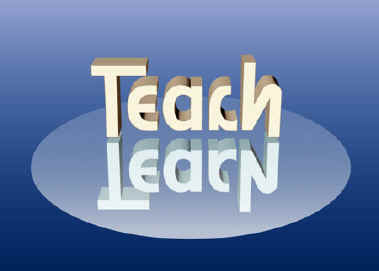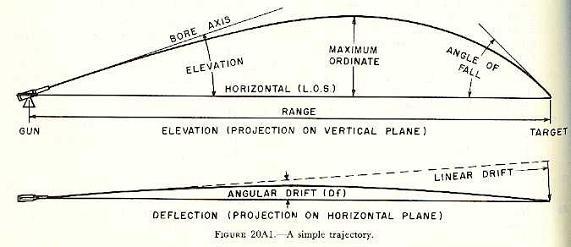

Pacey, Gunpowder as a tool of empires: 1450-1700
Background | argument | case | origins & use of ballistics | dates | conclusion
![]() The crucial roles of China, Turkish Ottomans, Persia, Japan and Europe in the devastation of order based on horseback that depended upon holding extensive land, organization of skilled labor, and a class structure based on faith.
The crucial roles of China, Turkish Ottomans, Persia, Japan and Europe in the devastation of order based on horseback that depended upon holding extensive land, organization of skilled labor, and a class structure based on faith.
Background: how do the authors sustain one another's arguments? ![]()
"No other countries were known to have obtained gun-making technology from China, where methods and designs were both conservative and protected by secrecy, but many nations obtained guns, or knowledge of how to make them through contact with the Portuguese."
p. 73.
- Turkish ascendancy, The Ottoman Empire 1514-20: the technical domestication of the Asian continent's diversity.
- Gunpowder and society, India, Akbar, arsenals and brass 1556, Persian (Iran) and Ottoman Imperial rivalry.
- Gun manufacture, Ottomans, not until 1740 was high energy and high tensile steel introduced to England (81)
- Trade Textiles and Ceramics, "handicraft industries of India and China were the twin pillars of commerce in Asia. (82)
- Japanese Muskets, The importance of blocked technical systems. (88-91)
| aspects | What or Where | related ideas and concepts |
|---|---|---|
| technical | Asian gunpowder, windmills, compass, silk & cotton looms, ceramics, paper & printing | China material hearth or dispersal center, Pacey |
| socio- | innovative organization | Pursell’s four stages |
| ideo- | Domestication of space | and time with clocks |
(agriculture) |
(fine technology) |
Asia and the slow diffusion of technical systems westward thanks to the Arabs.
"Bronze barrels for cannon were being produced in such quantity and in so many countries by about 1500 that one historian called this a 'second bronze age'. Not only was there large-scale production in Europe, the Ottoman Empire, India and China, but before 1650 guns had been manufactured in Korea, Japan, Siam, and Iran,...."
"All this can be traced back to the small hand-guns made in China before 1288, which stimulated the development of large cannon...."
"The Siamese kingdom ...probably used Chinese casting methods to make guns."
"In 1364, when the Turks began to make cannon. . ."
1453, the fall of Constantinople convincingly demonstrated that the cannon had become a very effective siege weapon ....lighter more mobile field weapons."
Pacey, TWC, p. 74.
A fundamental change due to a key transition in materials.
Chinese shift from the Indian brass canons to the cast-iron barrels for cannon making. (exaptation)
The relative cheapness of cast-iron guns was of interest to the Dutch, because they needed many cannons for the shops of their large navy and because of their wars (of independence from) with Spain.
Pacey, TWC, p. 78-79.
Technical advances in "seeing," conceptualizing, and painting the world in a new manner.
The clock
The printing press and the compass
Telescopes --lenses of glass, spaced at effective intervals
The Cartesian coordinate system, or "x" & "y" coordinates, systematized geometry
Brunelleschi, Renaissance & perspective painting
Ballistics and the work of Niccolò Tartaglia for siege works & sighting of bombardment guns.
Scale drawings based on the means of perspective drawing.
Techniques used by Maurice of Nassau for the uses of guns: drill, small brigades, & defensive equipment.
Content:
1. Origins of innovation in Asia & America: two worlds apart
1.1 comparison survival technology & population
1.2 contrasts “fine technology" for clocks
2. Voyages of trade & rediscovery 1400-1790, ships are a small example of a tool complex because of the necessity of timber, pitch, tar, ropes, pulleys, fine technology [in the shape of compasses, sextants and logs] barrels, rigging and sails.
Case:
3. Transfer of novel tool complexes
3.1 paper making (Pacey, p. 42)
3.2 gunpowder, 1150, 1367, 1450, 1492
3.3 the three masts on a deck type ship originated in ?
What good is gunpowder without a means of delivery to a target?
Ballistics was based on the practice and then knowledge of aiming artillery, later based on algebra before calculus was common in the 1680s and 1690s.
Does the study of ballistics convince even solipsistic philosophers that there is a world beyond our comprehension?
The meaning of ballistics
The relation of ballistics to the works of Galileo, Kepler, and Newton
Dates and sounds
Key dates & words:
1150 use of explosive powder technology transfer east to west
1280 climatic disruption dialogue
1350 bubonic plague population decline & change
1445 Gutenberg in Mainz fine technology
1453 Constantinople fell catalyst since refugees fled west
1492 Columbus 1st voyage navigational tool complex: compass, sextant.
1514 The Turkish army with muskets & cannons destroyed the Persian Army
1517 Martin Luther’s theses ideo-technical changes: Reformation
1537 Niccolò Tartaglia's text on the "science of artillery."
1609 telescope (Netherlands) social & organizational resistance

New concepts:
• Geometry of projectiles formed a parabolic path
• Although heavy guns were often fired for maximum destructive effect at point blank range (with the barrel horizontal), greater range could be achieved by elevating the gun. Quadrants, sights and levels enabled the gunner to set the barrel at specified elevations.
• The question of determining the correct elevation necessary to fire a shot a given distance (and its inverse, the prediction of range at a given elevation) was the most taxing problem of gunnery as a mathematical art.
• Tartaglia set the terms of the debate by seeking to portray the geometry of a projectile's trajectory based on the opposed natural and violent motions of Aristotelian physics. His work provided the basis for many subsequent accounts in textbooks and manuals.
• Galileo offered a new foundation in his Discorsi of 1638, demonstrating the parabolic path of projectiles and reinforcing the military relevance of his work with a complete table of ranges.
• time line as a measure of growing precision, performance and rates of diffusion for new inventions.
• absolute necessity of a dialogue in technology transfer
“technology transfer” i.e. reciprocating motion into rotary motion
• blocks in technological innovation due to any of the three aspects or spheres
“bottlenecks” as obstacles or opportunities?
Some examples of bottlenecks are widespread availability of digital television or electrical and natural gas powered vehicles.
In the following chapter, as a consequence of guns, Pacey notes that:
• regimentation and manufacture arose side by side as a synergistic process where the means to a strategic outcome depended on techniques and not merely possession of superior tools.
"Such reorganization could involve training the the operator in more efficient ways, or dividing the task between several people."
p. 98.
Any machinery requires a certain level of skill and thus the user's performance enhancement required training, more than in previous use of tools, the machine demanded an upgrading of the operator's behavior, intelligence and skills.
• The standardization of space in that artists and ballistics used a similar rationale:
The employment of a common language and reasonable schematic to frame objects at a distance and this to understand extension in space as an objective and not only a subjective experience changed society and how subsequent culture's understood the world.
These new tools and techniques coincided with the rise of:
secularism, commercialism, rationalism, mechanization, atomistic philosophy produced such tensions in the agrarian based power structure of the Middle Ages and feudalism that a new order emerged in the cities of Italy, Flanders, and the Netherlands that was to challenge both the church and military power based in part on what sectors could acquire the new tools and with sufficient skills to employ them in commerce and warfare.
The Reformation is as much a technical achievement in the redesign of technology from three aspects as it is a spiritual reconstruction of Christendom. Printing, guns, clocks and books, were just some of the tools that made for a successful change in Europe's religions.
It was at once a war of liberation and a revolution in authority furthered by a technological sophistication of immense proportions.
This innovative process is called “the great titration!”
The great titration
List the contributions of each center of cultural diffusion:
| Sources | |||
|---|---|---|---|
| Europe | Asia | Africa | Americas |
| Silver, lead, timber, wool, hides, copper, olive oil, wine-press. | Glass, ceramics, silk-textiles, gunpowder, guns, paper, compass, ships, clocks, steel, numbers, sugar, tea, alcohol, windmills, cast-iron. | Iron, slaves, gold, coffee, ivory, yams. | Basic food items: potatoes, corn, beans, tobacco, squash, turkey. |
| Latin language | Bureaucracy | ||
 |
 |
 |
|
| Ottoman Turkey | titration | ||
"In one instance after another in Europe at this time, we find people analyzing how individual machines were operated, including musket's, surveying equipment, and spinning wheels."
• analyzing, necessary to the comprehension of how a sequence is transferred from an ideal practice into an artifact or work of artistry in crafting any object, but especially clocks, guns and cannons. A prerequisite for effective use of technology and adapting tool complexes to one's needs.
• domestication is used here to suggest that like the taming of wild plants and animals, the uniformity brought t Asia by the "second bronze age" in Asia with cannon, guns, textiles, paper, block printing, books,, ceramics and shipbuilding techniques is a form of taming of the many vernacular (hence diverse forms of technology and techniques flourishing from Cairo to Canton and Beijing to Damascus from 1400 to 1650.
• solipsistic, a view or theory that the personal self or the "universal self" is all that we can know actually exists.
• sensate, knowing by means of operating something, tactile, auditory and optical capabilities together as a means to discover something important, tacit understanding of the world.
titrate: to test a known mass by measuring volumetrically the precise amounts of different substances contributing bulk to a compound substance. The purpose of this titration is to measure the exact amount of a solution needed to produce a certain reaction.
i.e. ammonium nitrate (fertilizer ) needed to create an explosive device (bomb).
A worldwide technological transformation: 1500-1648.
Practice required tacit understanding of materials and the uses of fire, metal alloys, and tolerances of substances used to build ships, create large armaments and arsenals, discover the compass, and re-conceptualize the world in an orderly fashion.
Such a widespread redefining of the world by technology:
- ceramics (kilns for firing clay)
- iron-making (high fire and stronger metal casting of iron)
- paper and block printing
- gunpowder
- shipbuilding
- textiles
- clocks
was based on the experience of tool making, techniques, and maintaining tool complexes that sustained huge Renaissance populations, protected their wealth, and defended their access to sources of material power, This could only have occurred once the great titration of Asian inventions converged in the Ottoman Empire and spread or diffused westward with from China with necessary & diverse contributions from Hindu (numbers, ships, cloth, and sugar cane), Buddhist (books, bells, temples) and Islamic (Algebra, Alchemy, Alcohol & paper, coffee, sugar, clocks), and Persian (windmills, towers, and water-lifting devices for irrigation) civilizations.
 |
||
|---|---|---|
| Tools of Toil: what to read. | ||
| Tools are historical building blocks of technology. | ||




